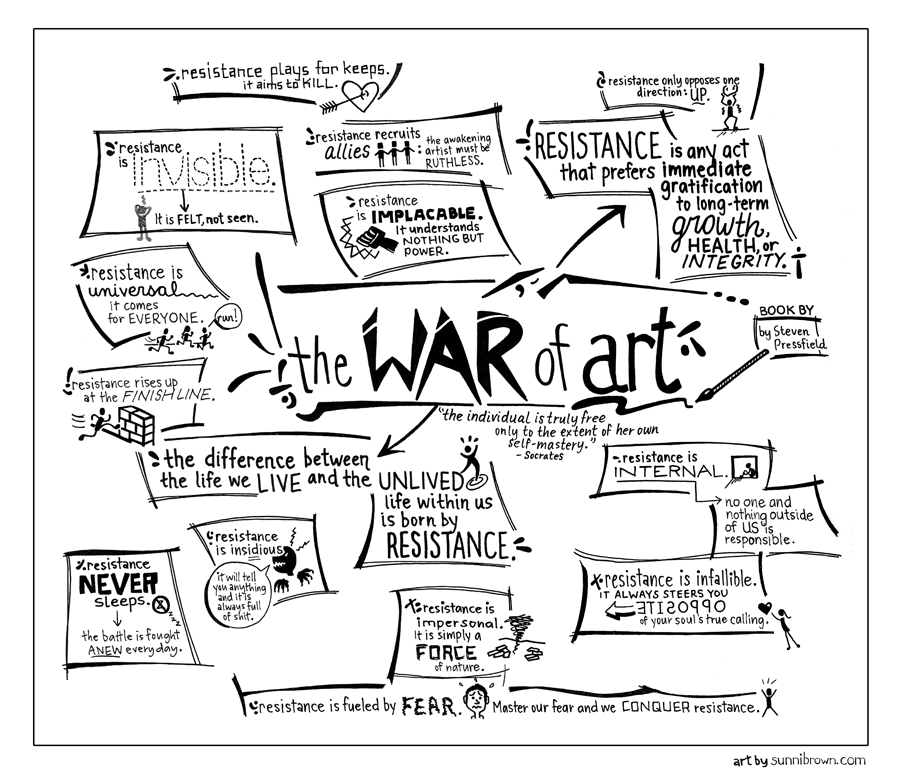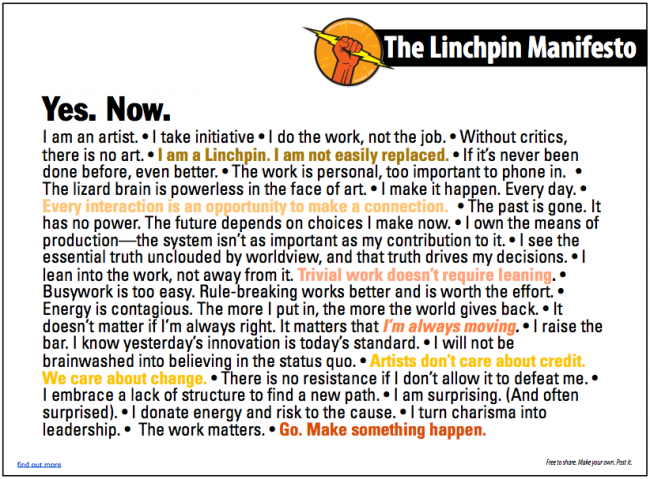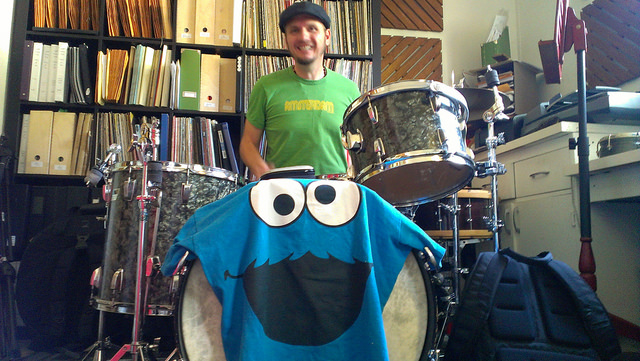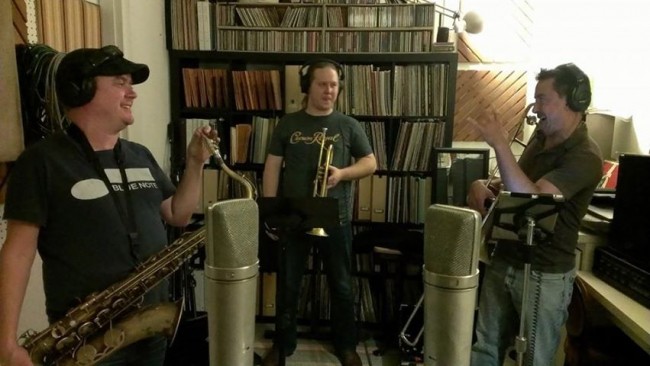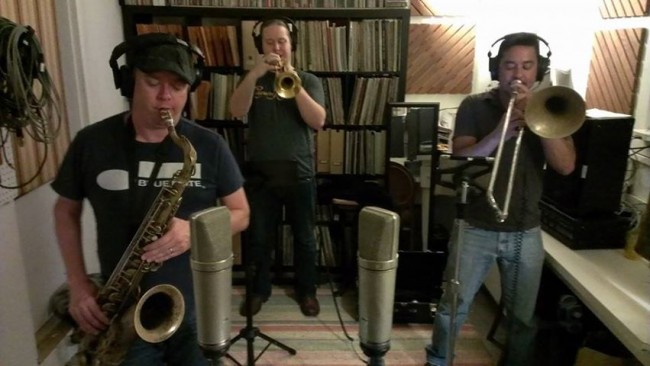Use The Tools To Fight The Resistance, Do The Work To Give Great Art
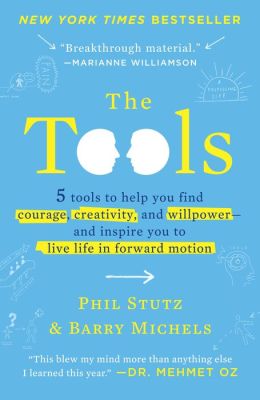
I recently listened to The Tools and was amazed at its brilliance. I loved this book. It immediately awakened a powerful affinity for its sense of possibility and inner strength, spirituality and courage. It also stoked my growing desire to become a therapist. Unlike therapy (and most self-help books) the tools are meant to be truly practical, immediate relief for people with specific problems who need something to work today, now.
In many ways it feels like the culmination of a string of self-help actionable books I’ve read over the past few years, an awakening that kicked-off with Linchpin, found a full-blown creative, spiritual worldview in The War of Art, and includes others like Daily Rituals: How Artists Work, The Advantage, Meditations, The Artist’s Way, The Six-figure Musician, The Four Agreements, Decisive, The Dip, The Icarus Deception, Poke The Box, The Power of Habit, Reality Is Broken, Incognito, and Ignore Everybody.
The five tools it refers to are sort of Jungian self-help visualizations to help break through common emotions keeping us from being courageous and finding our purpose: fear, anxiety, anger, insecurity. Practice connecting yourself to The Grateful Flow, for instance, by getting in the habit of enumerating things you’re grateful for, and get out from under the black cloud of worry or negativity. Or avoid the maze of the past by connecting to the Outflow of Love and neutralize those that invade your thoughts.

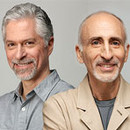
The tools, it turns out, were invented by Phil Stutz (in the tan jacket), a New Yorker psychiatrist who amazed and taught Barry Michels (in the gray shirt), a skeptic lawyer turned psychologist, these methods before they became partners and SoCal therapists to the stars. Stutz is the prophet and Michels is the disciple and evangelist. Stutz’s tough-guy delivery makes it cool and authentic, despite the originality and audacity of his spiritual imagination. Both tell their own conversion stories and present the whole thing like a psychotherapy revolution and new-age religion.
The first thing that amazed me is that Phil identified and filled (pun-intended) a conspicuous weakness in the therapist’s abilities: to give patients specific, practical, immediate relief to overwhelming problems in the form of visualization homework. Don’t rely on months or years of talk-therapy, start practicing the tools and feel stronger.
The second thing that amazed me is how empirically spiritual Stutz’s worldview is. You don’t have to believe in the invisible mechanisms he posits, just try the tools and feel the effects. But there are spiritual laws and forces at work and soon you will feel and use the force and see these archetypal dynamics as the key to your inner greatness, succeeding by imitating and becoming one with them.
The emphasis on higher forces will undoubtably be a stumbling block for those not predisposed to some sort of faith. Michels takes us through his trouble believing and is ultimately convinced by a miracle of coincidence. As with the 12-step model, the emphasis is on what works. Higher forces can be thought of as the collective unconscious or the spiritual world, and is referred to as the source, the universe…Â mystery. This is just the type of undogmatic approach that awakens my sympathetic sense of the spiritual world.
After the first part explains the five tools, the focus telescopes out from personal psychotherapy to societal spirituality. Here we see the tools as part of the new religion, which are personal, practical amalgams of any tradition or system. Modern sinners are consumers and addicts and modern saints are creators and risk-takers.
Their conclusion rang true as they apply their worldview to society at large: we are a culture of consumers who need to become creators. Â This is a familiar message, both because I hear versions of it all over and because it’s something I say to myself frequently. The Tools takes it a step further to say that only through the example of individuals accessing higher forces will our ultra-individualistic society find the hope to face our shared challenges.
The book’s structure and spiritual system closely paralleled Stephen Pressfield’s credo in The War of Art. Pressfield also spends the first part talking about the practical battles the artist must wage within, daily, then switches to a holistic, religious worldview that explains the greater spiritual reality. See Sunni Brown’s visual summaries of The War of Art below, click to enlarge and see part 1&2.
Seth Godin, since Linchpin, often echoes Pressfield’s central demon, The Resistance. Resistance comes up in The Tools too, as a similar sort of spiritual workout opportunity. For the unfocussed individual The Resistance is a self-sabotaging demon, for the spiritual warrior The Resistance is like weights at the gym. Only through adversity can we build inner strength. Â Only by battling the resistance head-on can we do our best work.
The philosophies in these three books – Linchpin, The War of Art, and The Tools — speak to my my highest ambitions with a common language about how to be a courageous artist, doing the work, giving gifts of great art, and inspiring others to be brave. They also give a system to my spirituality, already reawakened by the recovery method’s emphasis on higher powers, called higher forces by Stutz and Michels.
I believe in the artist’s ability to channel higher forces and now I’ve got a good framework for doing the work. I highly recommend these three books to all the artists out there, even if you don’t think of yourself as one, yet.
Related Resources
- The Tools Book site
- A PDF of The Tools
- My cheet-sheet of the The Tools
- New Yorker article on Michels
- Phil Stutz and Barry Michels Teach the Tools on WNYC
- Mark Maron’s WTF interview with Stutz
- Kim Masters interview with Stutz and Michels on KCRW
- Seth Godin’s site
- Steven Pressfield’s War of Art book site
- Elizabeth Gilbert’s TED talk: Your elusive creative genius (similar themes)

